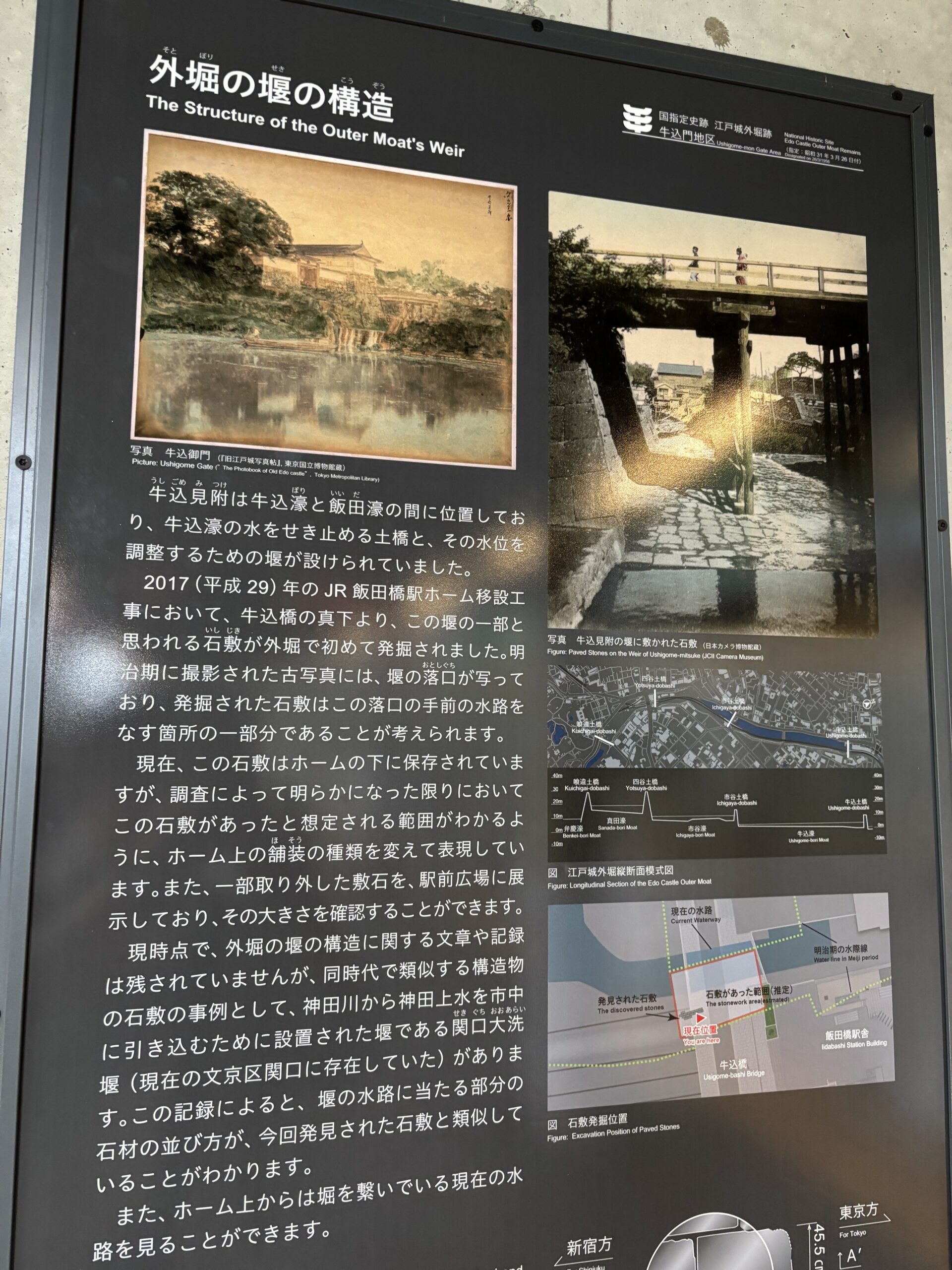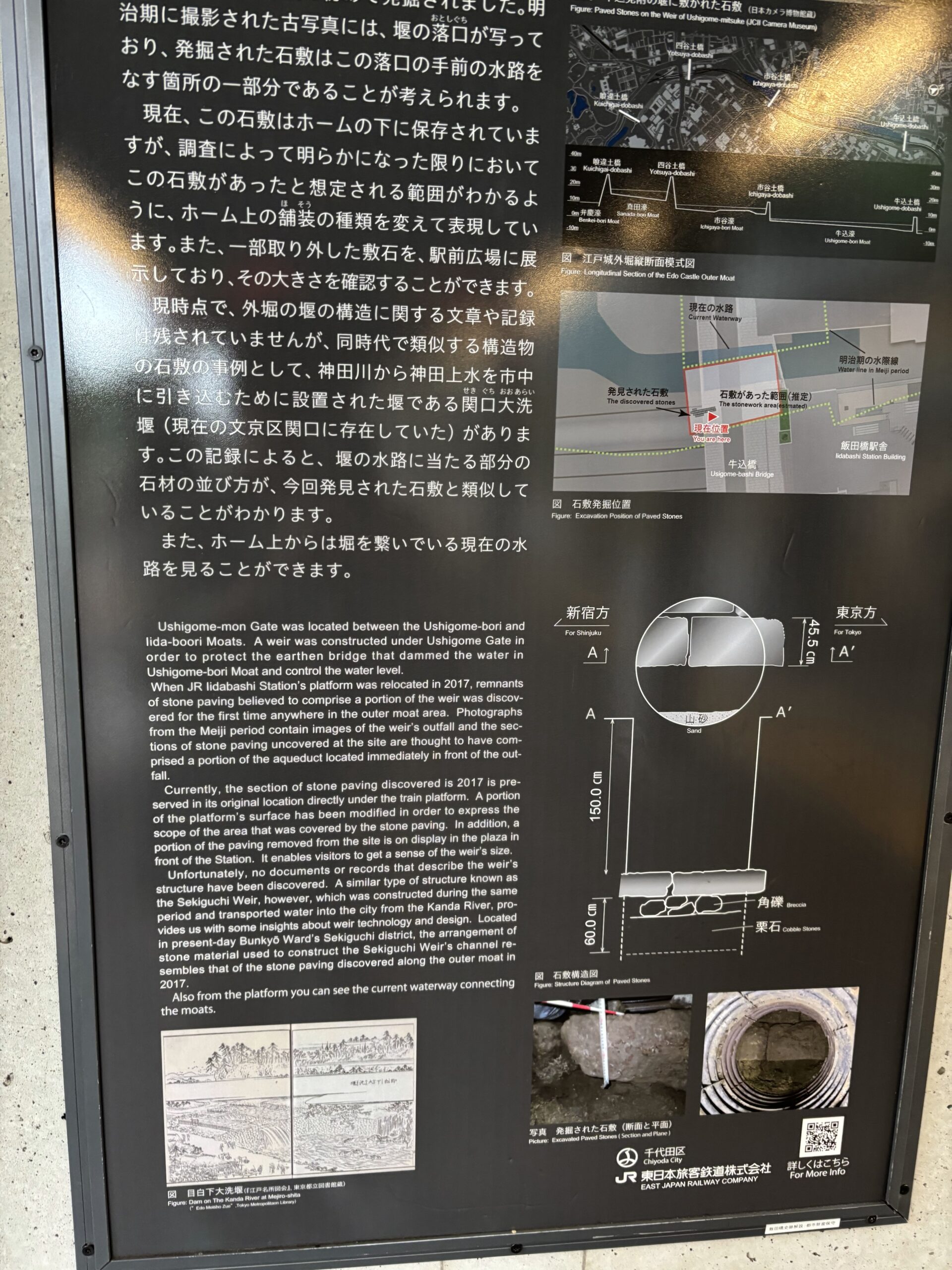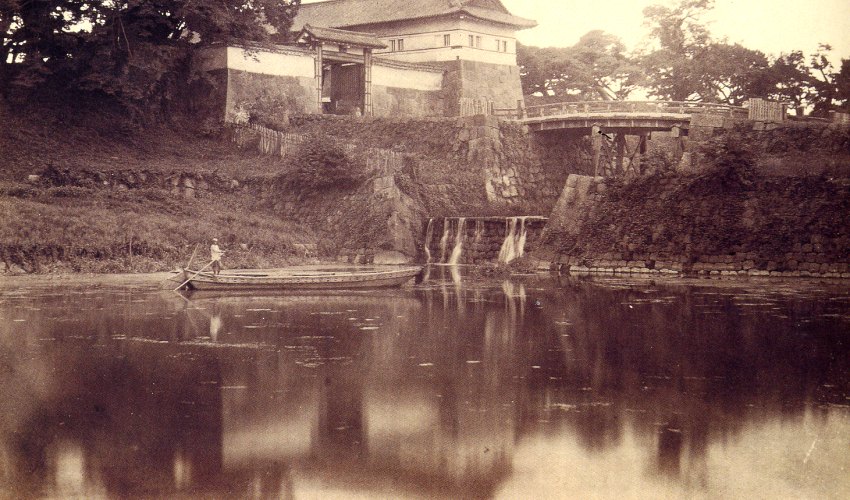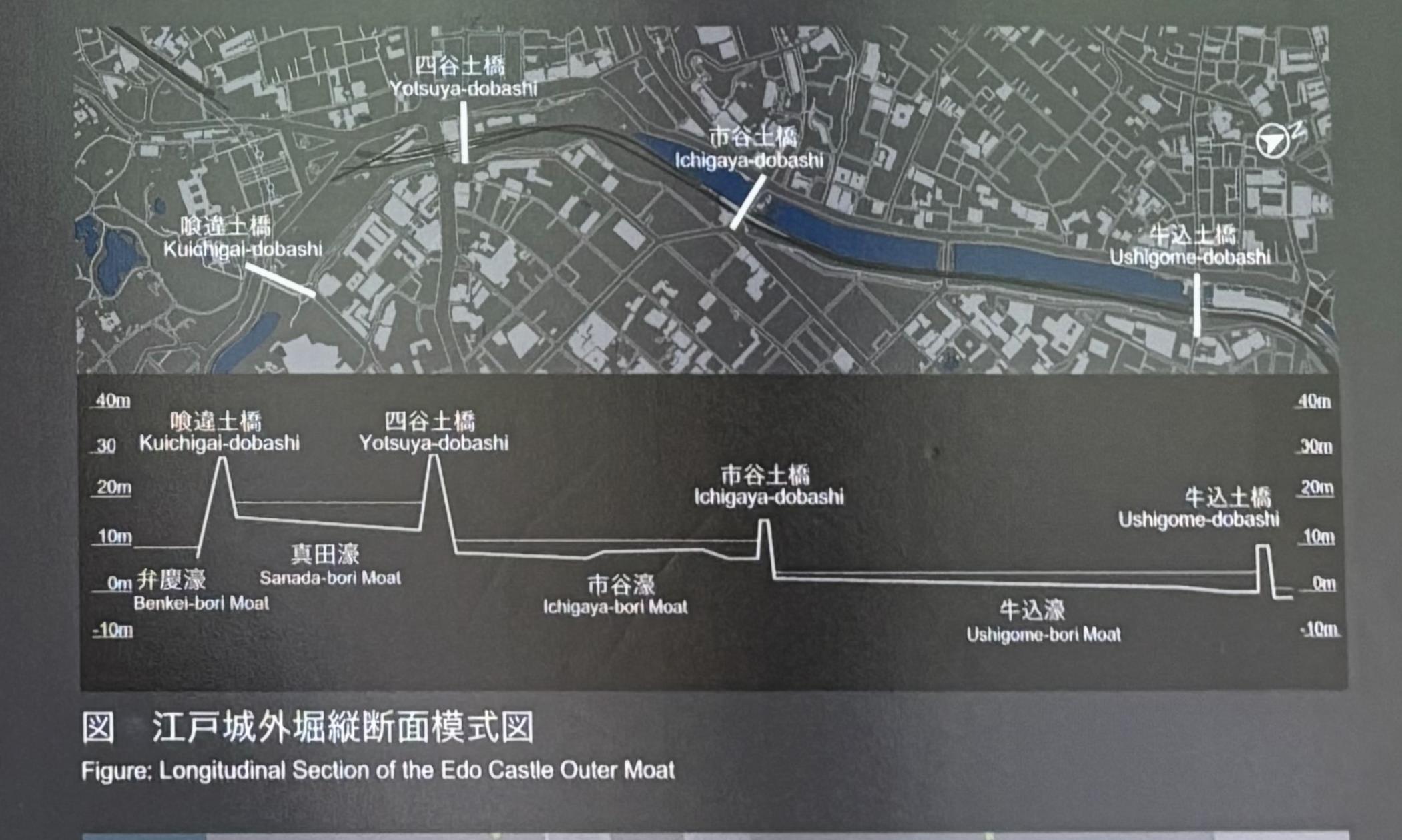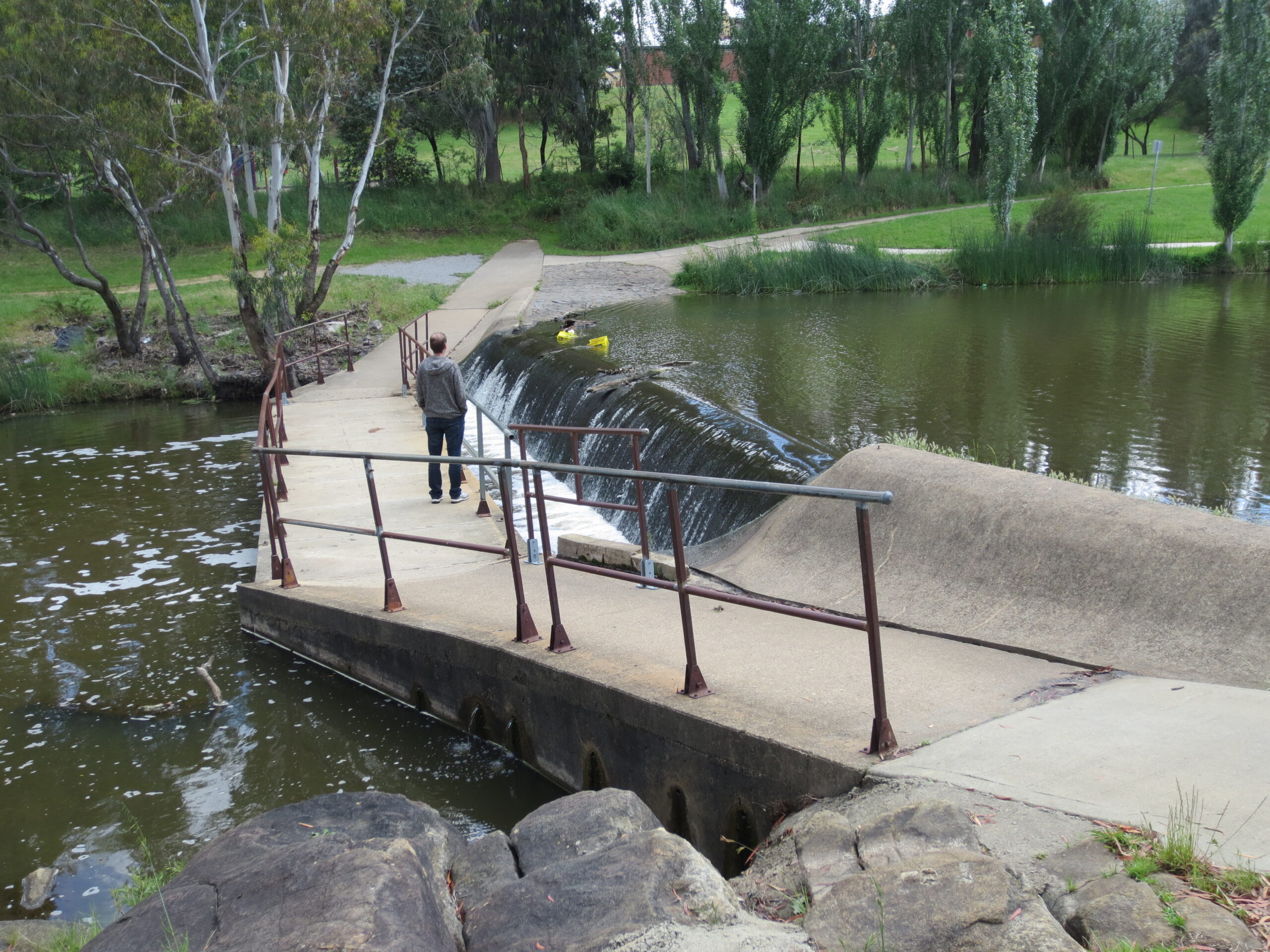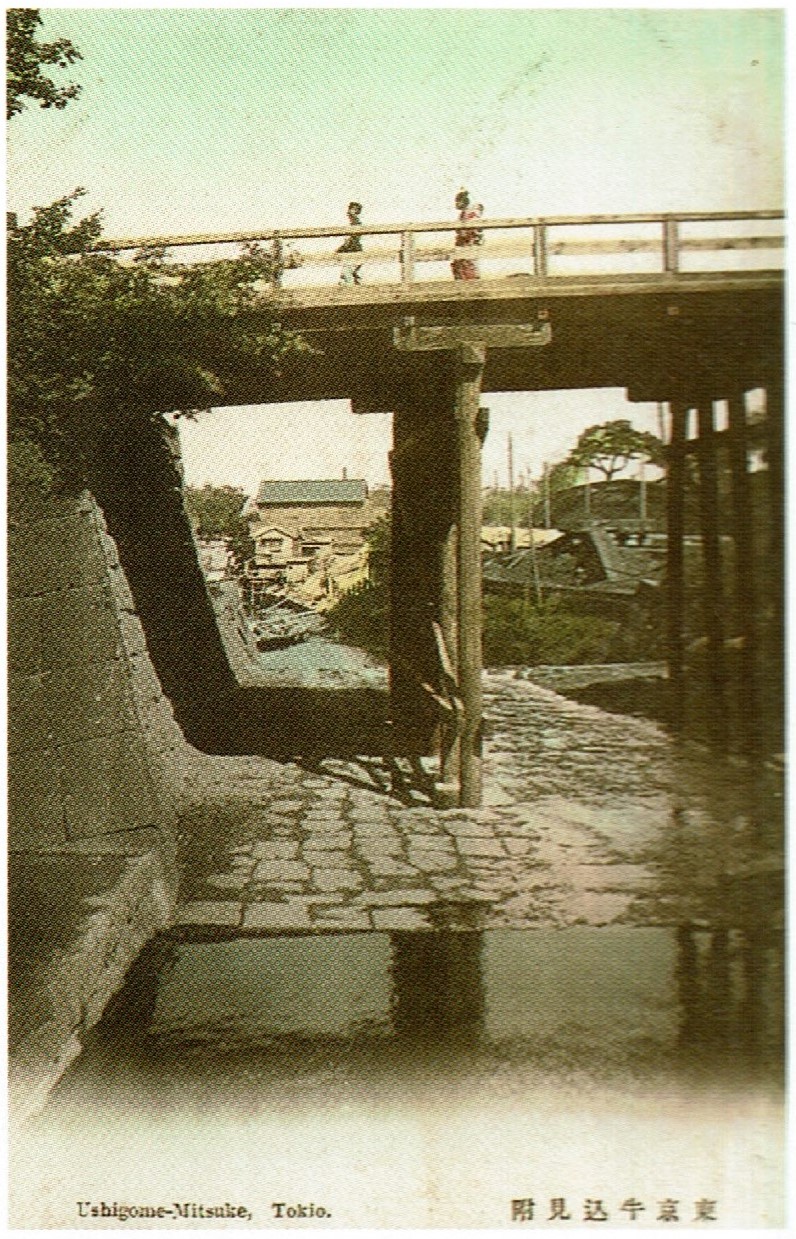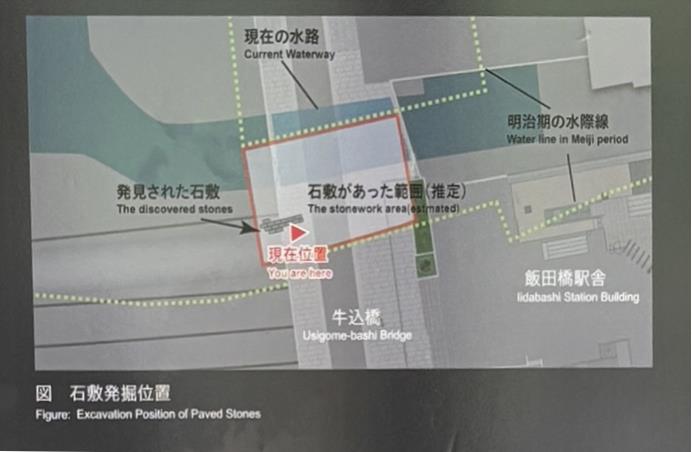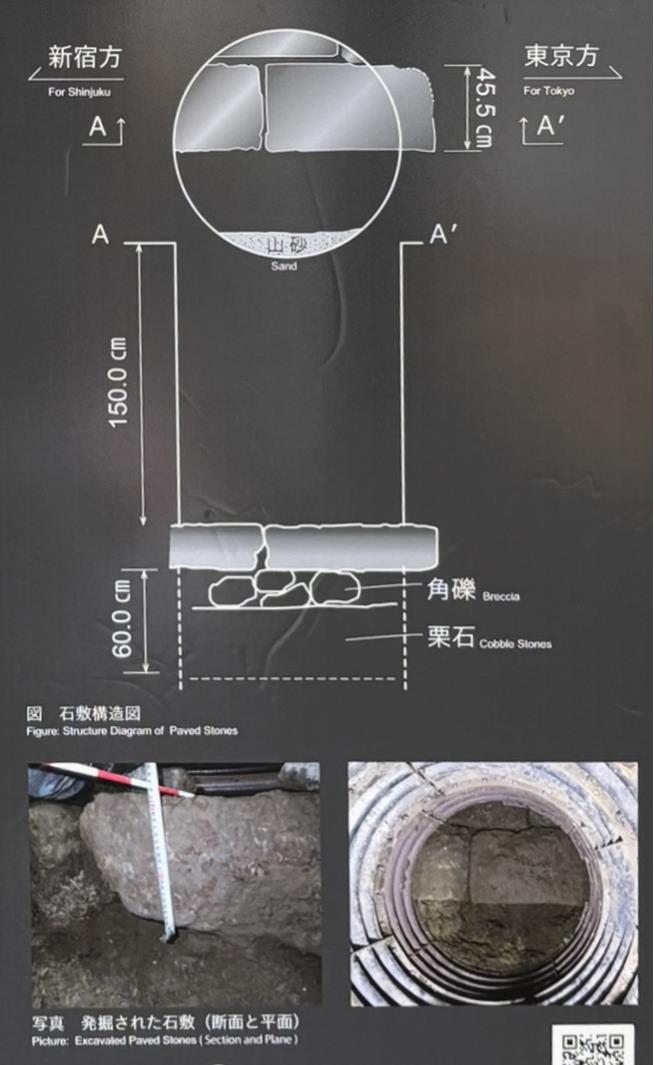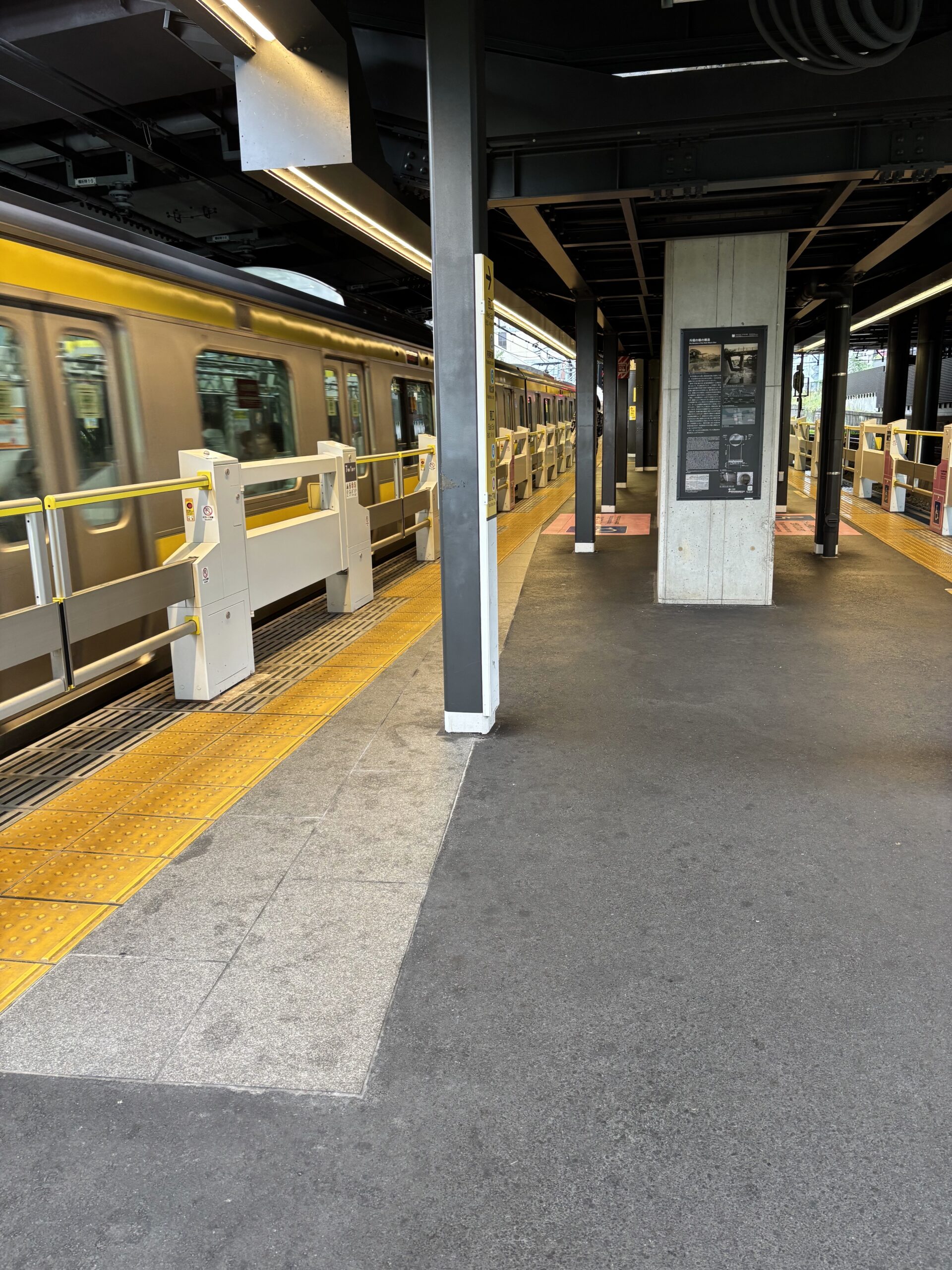JR飯田橋駅のホームに「外堀の堰の構造」があります。
| 牛込見附は牛込濠と飯田濠の間に位置しており、牛込濠の水をせき止める土橋と、その水位を調整するための堰が設けられていました。 2017(平成 29)年のJR飯田橋駅ホーム移設工事において、牛込橋の真下より、この堀の一部と思われる石敷が外堀で初めて発掘されました。明治期に撮影された古写真には、堰の落口が写っており、発掘された石敷はこの落口の手前の水路をなす箇所の一部分であることが考えられます。 |
石敷 いしじき。平たい石を敷き詰めて舗装した所。石畳。
落口 おとしぐち。滝となって水流が落下する所。下水などの排水口。
| 現在、この石敷はホームの下に保存されていますが、調査によって明らかになった限りにおいてこの石敷があったと想定される範囲がわかるように、ホーム上の舗装の種類を変えて表現しています。また、一部取り外した敷石を、駅前広場に展示しており、その大きさを確認することができます。 |
| 現時点で、外堀の堰の構造に関する文章や記録は残されていませんが、同時代で類似する構造物の石敷の事例として、神田川から神田上水を市中に引き込むために設置された堰である関口大洗堰(現在の文京区関口に存在していた) があります。この記録によると、堰の水路に当たる部分の石材の並び方が、今回発見された石敷と類似していることがわかります。 また、ホーム上からは堀を繋いでいる現在の水路を見ることができます。 |
| Ushigome-mon Gate was located between the Ushigome-bori and Iida-bori Moats. A weir was constructed under Ushigome Gate in order to protect the earthen bridge that dammed the water in Ushigome-bori Moat and control the water level. When JR Iidabashi Station’s platform was relocated in 2017, remnants of stone paving believed to comprise a portion of the weir was discovered for the first time anywhere in the outer moat area. Photographs from the Meiji period contain images of the weir’s outfall and the sections of stone paving uncovered at the site are thought to have comprised a portion of the aqueduct located immediately in front of the outfall. Currently, the section of stone paving discovered is 2017 is preserved in its original location directly under the train platform. A portion of the platform’s surface has been modified in order to express the scope of the area that was covered by the stone paving. In addition, a portion of the paving removed from the site is on display in the plaza in front of the Station. It enables visitors to get a sense of the weir’s size. Unfortunately, no documents or records that describe the weir’s structure have been discovered. A similar type of structure known as the Sekiguchi Weir, however, which was constructed during the same period and transported water into the city from the Kanda River, provides us with some insights about weir technology and design. Located in present-day Bunkyo Ward’s Sekiguchi district, the arrangement of stone material used to construct the Sekiguchi Weir’s channel resembles that of the stone paving discovered along the outer moat in 2017. Also from the platform you can see the current waterway connecting the moats. |
